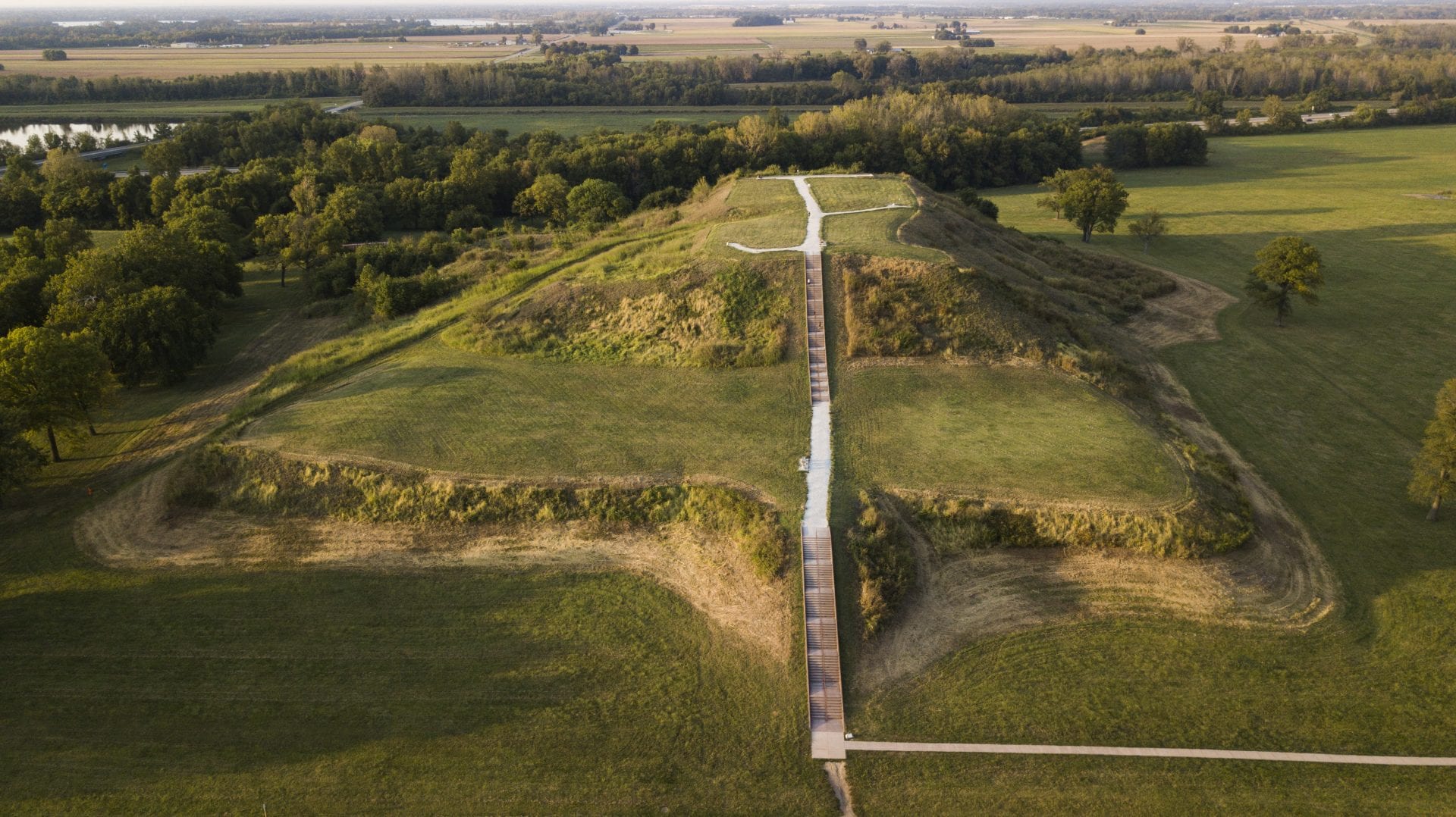Archaeologists from Washington University in St. Louis suggest that the abandonment of Cahokia was unlikely to have been caused by deforestation.
Cahokia was the largest urban settlement to develop from the Mississippian culture, a mound-building pre-Columbian civilisation that developed in the Midwestern, Eastern, and South-eastern United States. At its peak, Cahokia was the largest urban centre north of the Mesoamerican civilisations of Central America and home to a population of up to 20,000 inhabitants.
Cahokia began to decline by the 13th century and was mysteriously abandoned around AD 1300-1350. Scholars have suggested various causes, such as environmental factors, flooding, deforestation, or an exhaustion of natural resources.
Archaeologists have now excavated around the earthen mounds and studied sediment core samples to test the theories.
“There’s a really common narrative about land use practices that lead to erosion and sedimentation and contribute to all of these environmental consequences,” said Caitlin Rankin, an assistant research scientist at the University of Illinois at Urbana-Champaign who conducted this work as part of her graduate studies at Washington University.
“When we actually revisit this, we’re not seeing evidence of the flooding,” Rankin said.
“The notion of looming ecocide is embedded in a lot of thinking about current and future environmental trajectories,” said Tristram R. “T.R.” Kidder, the Edward S. and Tedi Macias Professor of Anthropology in Arts & Sciences at Washington University. “With a growing population and more mouths to feed, overconsumption of all resources is a real risk.
“Inevitably, people turn to the past for models of what has happened. If we are to understand what caused changes at sites like Cahokia, and if we are to use these as models for understanding current possibilities, we need to do the hard slogging that critically evaluates different ideas,” added Kidder, who leads an ongoing archaeological research program at the Cahokia Mounds State Historic Site. “Such work allows us to sift through possibilities so we can aim for those variables that do help us to explain what happened in the past — and explore if this has a lesson to tell us about the future.”
No indications of self-inflicted harm
Writing in the journal Geoarchaeology, Rankin and colleagues at Bryn Mawr University and Northern Illinois University described their recent excavations around a Mississippian Period (AD 1050-1400) earthen mound in the Cahokia Creek floodplain.
Their new archaeological work, completed while Rankin was at Washington University, shows that the ground surface on which the mound was constructed remained stable until industrial development.
The presence of a stable ground surface from Mississippian occupation to the mid-1800s does not support the expectations of the so-called “wood-overuse” hypothesis, the researchers said.
This hypothesis, first proposed in 1993, suggests that tree clearance in the uplands surrounding Cahokia led to erosion, causing increasingly frequent and unpredictable floods of the local creek drainages in the floodplain where Cahokia was constructed.
Rankin noted that archaeologists have broadly applied narratives of ecocide — the idea that societies fail because people overuse or irrevocably damage the natural resources that their people rely on — to help to explain the collapse of past civilizations around the world.
Although many researchers have moved beyond classic narratives of ecocide made popular in the 1990s and early 2000s, Cahokia is one such major archaeological site where untested hypotheses have persisted.
“We need to be careful about the assumptions that we build into these narratives,” Rankin said.
“In this case, there was evidence of heavy wood use,” she said. “But that doesn’t factor in the fact that people can reuse materials — much as you might recycle. We should not automatically assume that deforestation was happening, or that deforestation caused this event.”
Kidder said: “This research demonstrates conclusively that the over-exploitation hypothesis simply isn’t tenable. This conclusion is important because the hypothesis at Cahokia — and elsewhere — is sensible on its face. The people who constructed this remarkable site had an effect on their environment. We know they cut down tens of thousands of trees to make the palisades — and this isn’t a wild estimate, because we can count the number of trees used to build and re-build this feature. Wood depletion could have been an issue.”
“The hypothesis came to be accepted as truth without any testing,” Kidder said. “Caitlin’s study is important because she did the hard work — and I do mean hard, and I do mean work — to test the hypothesis, and in doing so has falsified the claim. I’d argue that this is the exciting part; it’s basic and fundamental science. By eliminating this possibility, it moves us toward other explanations and requires we pursue other avenues of research.”
WASHINGTON UNIVERSITY IN ST. LOUIS
Header Image Credit : MattGush – iStock





